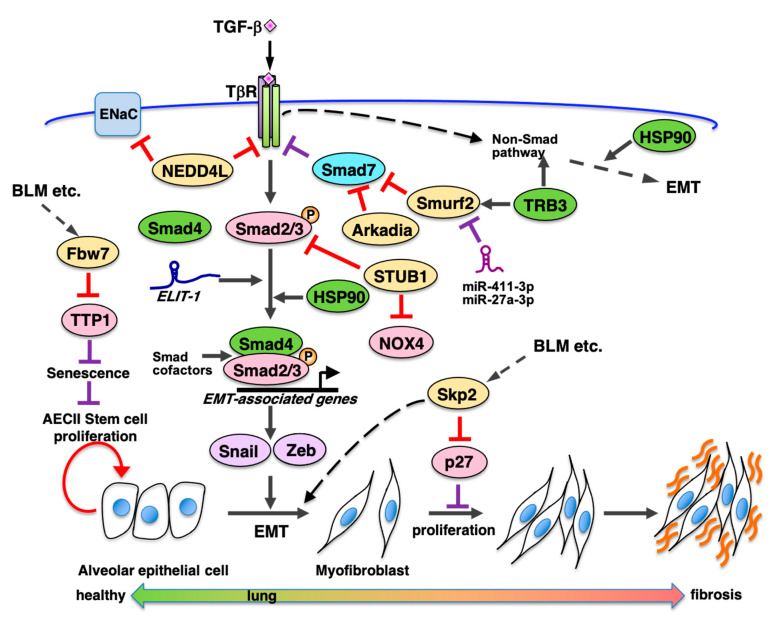Figure 3.
Possible modulators of fibrosis via regulating TGF-β signaling and cell proliferation. TGF-β signaling promotes induction of epithelial–mesenchymal transition (EMT) and expression of fibrosis-associated genes via TGF-β-Smad-dependent canonical pathway and non-Smad pathway. In the canonical pathway, TGF-β binds to and activates its receptor complex and promotes phosphorylation of Smad2/3. Then activated Smad2/3 forms a complex with Smad4 and the complex binds to the promoter regions of target genes associated with EMT and fibrosis. Inhibitory Smad such as Smad7 and Smad cofactors to regulate the TGF-β-Smad pathway. MiRNA such as miR-21 inhibits translation of Smad7 as a positive regulator of TGF-β signaling. Several lncRNAs participate in controlling TGF-β-mediated EMT and/or fibrosis. A lncRNA ELIT-1 which is induced by TGF-β-Smad pathway binds to Smad3 to facilitate recruitment to promoters of Smad target genes promoting EMT as a Smad cofactor. Moreover, several E3 ubiquitin ligases are involved in promotion in pulmonary fibrosis. Skp2 which promotes p27 degradation is involved in promotion of EMT and mesenchymal fibroblast proliferation. Fbw7 which participates in TPP1 degradation promotes alveolar epithelial stem cell senescence and pulmonary fibrosis. Abbreviations and details of each molecule are indicated in the text.

